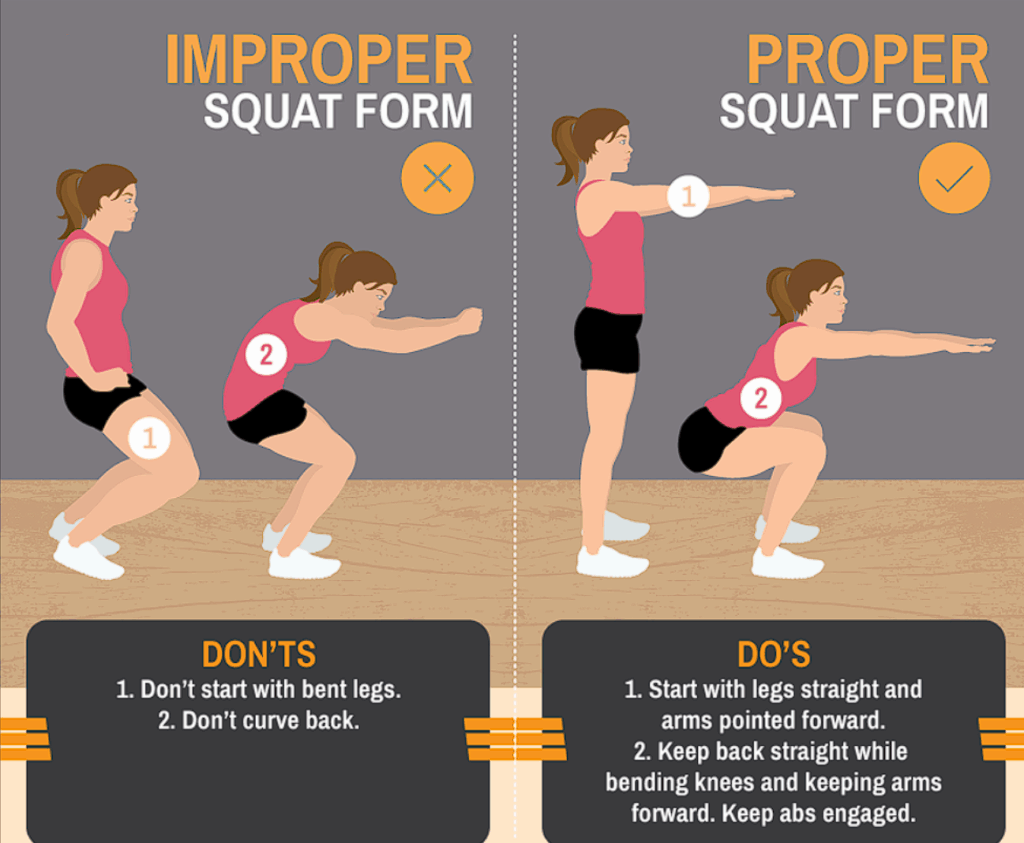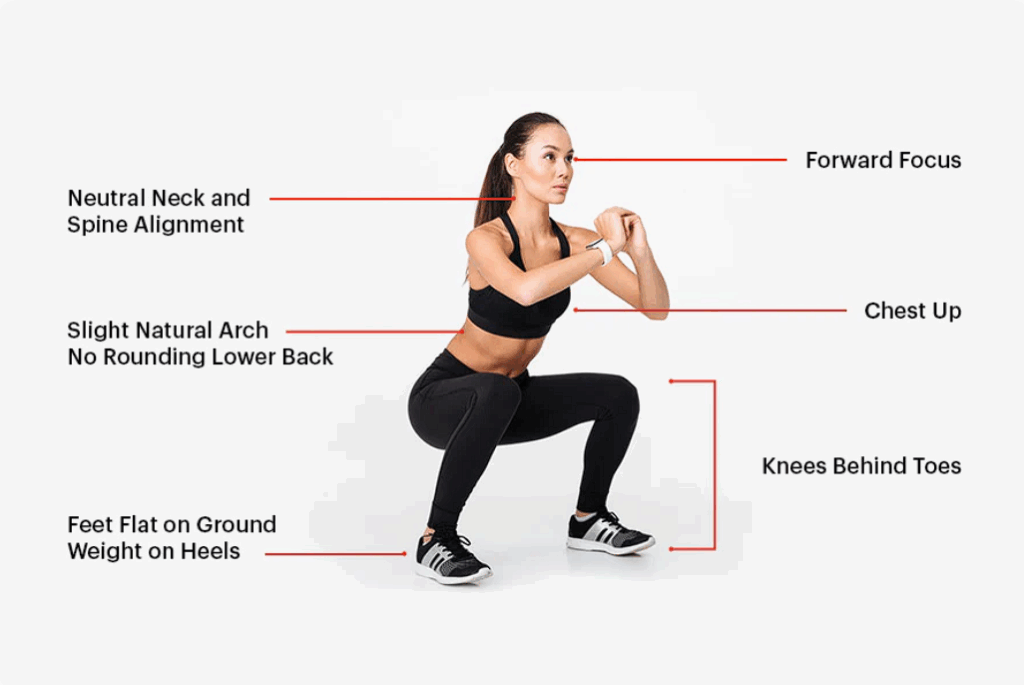Proper squat form is fundamental not only for building strength and muscle but also for preventing injuries and maximizing performance. A well-executed squat activates major muscle groups, including the quads, hamstrings, glutes, core, and lower back, contributing to overall athleticism and functional fitness. However, many lifters struggle with technique issues that compromise their progress and safety.
Understanding the Importance of Squat Form
Correct form maintains balanced muscle activation and protects vulnerable joints like the knees, hips, and lower back. The correct form can cause knee valgus, hip impingement, and lumbar strain injuries.
There are variations in squat technique, most notably the high-bar versus low-bar squat. High-bar squats position the barbell higher on the traps and typically require a more upright torso, emphasizing the quads. Low-bar squats place the barbell lower across the rear delts, allowing for a slightly more forward torso angle, which can engage the posterior chain more heavily.
The Most Common Squat Mistakes and How to Correct Them
One of the most frequent errors is the knees collapsing inward, or knee valgus. This misalignment stresses the knee joint and reduces glute activation. To correct this, focus on the cue “push the knees out.” It helps maintain proper alignment by engaging the glute muscles and stabilizing the hips. Incorporating strengthening exercises such as glute bridges and banded squats can further reinforce this habit.

Another common issue is excessive forward lean. It often results from poor thoracic mobility or weak core engagement, placing unnecessary strain on the lower back. Use the cue “chest up, eyes forward” to keep the torso upright and the spine neutral throughout the movement.
Thoracic spine extensions are a useful mobility drill to improve posture and reduce forward lean.
Many lifters struggle to reach full depth in their squats. Proper depth means lowering until the hip crease drops just below the top of the knee. The cue “sit back and down” encourages hip engagement and proper descent. Deep squat holds and hip-opening stretches can improve flexibility and enable greater depth.
Lifting the heels during a squat compromises balance and shifts weight forward, increasing injury risk. The cue “weight through the heels” reminds lifters to distribute force evenly and maintain a stable base. Ankle dorsiflexion stretches help improve mobility and prevent heel lift.
Rounding of the lower back, or “butt wink,” reduces spinal stability and can lead to injury. The cue “brace the core and engage the lats” supports a rigid torso and protected spine. Strengthening exercises such as bird dogs and planks build the necessary core stability to maintain proper posture.
Proper Squat Setup and Positioning
A consistent and effective squat begins with the correct setup. The stance should be about shoulder-width apart, with toes slightly turned out to accommodate hip anatomy and allow natural knee tracking.

Barbell placement varies depending on your squat style—high-bar squats position the bar across the upper traps, while low-bar squats rest the bar lower on the rear delts. Regardless, the barbell should be centered over the midfoot to ensure balance.
Breathing is another critical aspect of setup. Taking a deep breath before descending helps create intra-abdominal pressure, stabilizing the spine. Exhale steadily at the top of the movement to maintain control.
Advanced Squat Cues for Experienced Lifters
For lifters looking to refine their technique, cues such as “screw the feet into the ground” can help activate the posterior chain by externally rotating the hips. Coordinating the movement by “breaking at the hips and knees simultaneously” promotes control and balance during the descent.
When rising, the cue “explode up while keeping core tight” engages the quads and glutes powerfully while preserving spinal integrity.
Incorporating Squat Cues Into Your Routine
Warm-up drills that focus on mobility and positioning can significantly enhance squat form. Exercises such as hip openers and dynamic stretches prepare the body for the movement demands. Accessory exercises like Bulgarian split squats, box squats, and pause squats develop specific weaknesses and reinforce proper technique.
Programming should prioritize technique improvement through moderate reps, controlled tempo, and adequate rest. Gradually increasing volume and intensity ensures safe progression.
Tools and Equipment for Squat Form Correction
Using resistance bands around the knees is an effective way to cue proper knee tracking and activate the hips. Squat wedges or small weight plates placed under the heels can aid ankle mobility for those struggling with dorsiflexion. Additionally, mirrors or video recordings provide valuable visual feedback to identify and correct form issues independently.

Frequently Asked Questions
Is it better to perform high-bar or low-bar squats?
Both have benefits; high-bar squats emphasize the quads with a more upright torso, while low-bar squats engage the posterior chain more. Choice depends on individual goals and anatomy.
How can I prevent my knees from caving inward during squats?
Focus on pushing the knees outward throughout the movement and strengthening the glutes with accessory exercises like glute bridges and banded squats.
How important is core engagement during the squat?
Core engagement is crucial to stabilize the spine and prevent rounding or injury. Bracing the core before descending creates a strong foundation for the lift.





